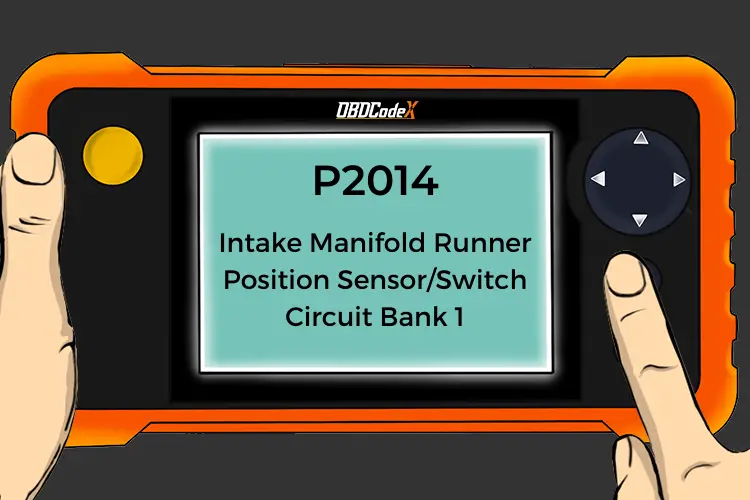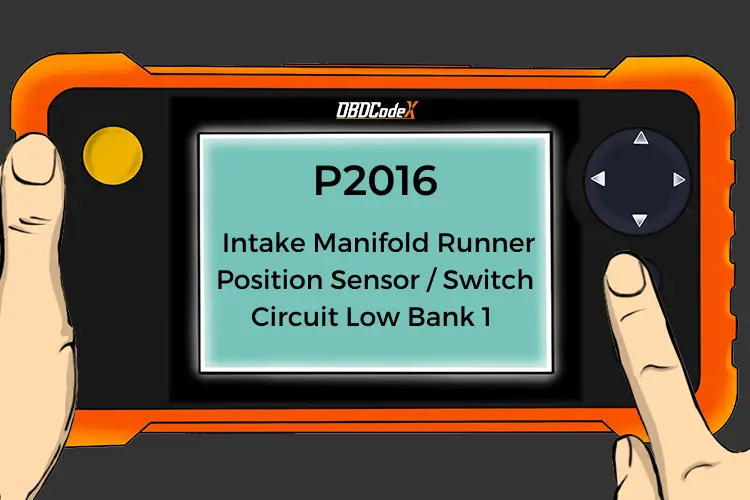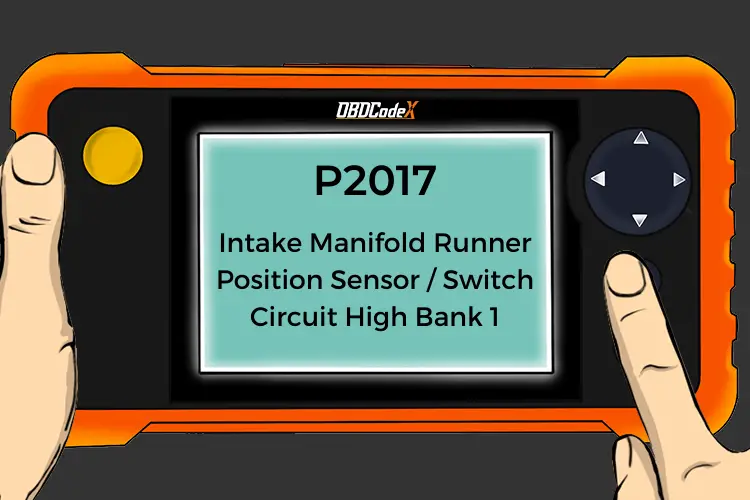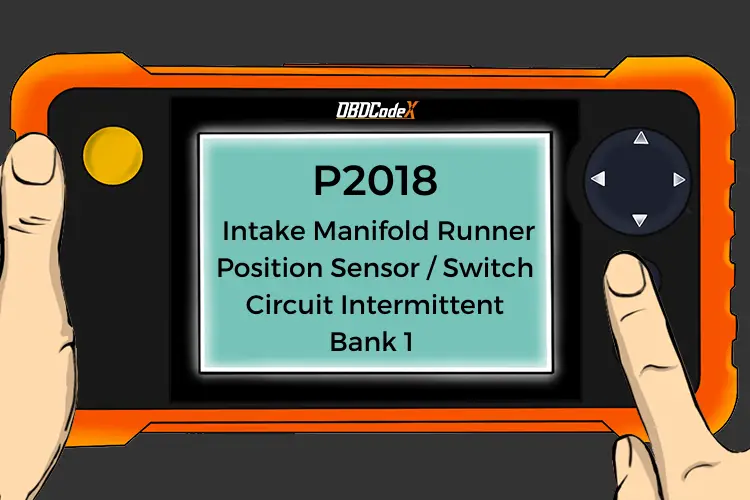P2015: Intake Manifold Runner Position Sensor / Switch Circuit Range/Performance Bank 1
Is your scanner showing P2015?
No worries. We'll show you what it means and how to deal with it.
P2015: Intake Manifold Runner Position Sensor / Switch Circuit Range/Performance Bank 1
OVERVIEWWhat Does The P2015 Code Mean?
This generic powertrain/engine diagnostic trouble code typically applies to fuel injected engines from most manufacturers since 2003. Those manufacturers include but are not limited to Ford, Dodge, Toyota, Mercedes, Volkswagen, Nissan and Infiniti.
This code is mostly concerned about the value provided by the intake manifold flow control valve/position sensor, also called known as a IMRC valve/sensor (typically located at one end of the intake manifold) which helps the vehicle’s PCM control the amount of air being allowed into the engine at various RPMs.
This code is set for Bank 1, which is the bank of cylinders that includes cylinder number 1. This can be a mechanical or an electrical circuit fault, depending upon vehicle manufacturer and fuel system.
Troubleshooting steps may vary depending upon manufacturer, type of fuel system and the type of intake manifold runner control valve/position (IMRC) sensor and wire colors.
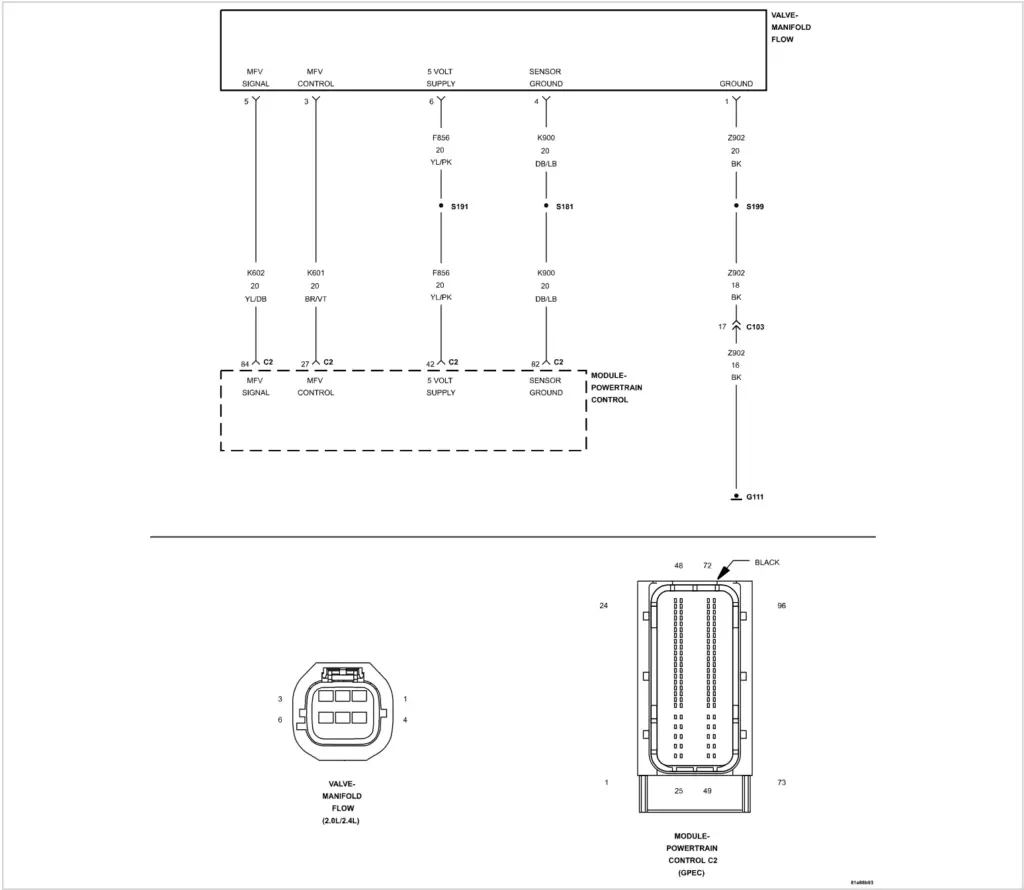
P2015 wiring diagram
What Are The Symptoms Of The P2015 Code?
Symptoms of a P2015 engine code may include:
- Malfunction Indicator Lamp (MIL) illuminated
- Lack of power
- Occasional misfire
- Poor fuel economy
What Are The Potential Causes Of The P2015 Code?
Typically, the causes for this code to set are:
- Sticking/faulty throttle plates/body
- Sticking/faulty IMRC valve
- Faulty IMRC actuator/sensor
- Rarely – faulty Powertrain Control Module (PCM)(programming required after replacement)
How Can You Fix The P2015 Code?
Step 1
A good starting point is always to check for technical service bulletins (TSB) for your particular vehicle. Your issue may be a known issue with a known fix put out by the manufacturer and can save you time and money during diagnosis.
Step 2
The next thing you should do is notice if there are any other diagnostic fault codes. If any of them are intake/engine performance system related, diagnose them first. Misdiagnosis of these codes has been known to occur if someone diagnoses this code before any intake/engine performance related system codes have been thoroughly diagnosed and repaired.
Make sure there are no intake or exhaust leaks. An intake leak, or vacuum leak, makes the engine run lean. An exhaust leak gives the impression of a lean running engine by pulling air past the air fuel ratio/oxygen (AFR/O2) sensor.
Step 3
Next, locate the IMRC valve/sensor on your particular vehicle. Once located, visually inspect the connectors and wiring. Look for rubbing, scraping, bare wires, worn spots or melted plastic connectors. Pull the connectors apart and carefully look at the terminals (the metal parts) inside the connectors. Check to make sure they are not burnt or corroded.
If in doubt, get some Electrical Contact cleaner at any parts store if cleaning of the terminals is needed. If not possible, get some rubbing alcohol and a small plastic bristle brush to clean them. Once cleaned, let them air dry. Pack the connector cavity with dielectric silicone compound (same stuff they use for light bulb sockets and spark plug wires) and reassemble.
Step 4
If you have a scan tool, clear the diagnostic trouble codes from memory, and see if this code returns. If it does not, then the connections were most likely your problem.
If the code does return, we will need to test the IMRC valve/sensor voltage signals to and from the PCM. Monitor IMRC sensor voltage on your scan tool. If a scan tool is not available, then test the signal coming from the IMRC sensor with a digital volt ohm meter (DVOM).
With the sensor connected, the red voltmeter lead should be attached to the IMRC sensor signal wire and the black voltmeter lead connected to ground. Start the engine and monitor the IMRC sensor input. Snap the throttle. As engine RPM increases, the IMRC sensor signal should change. Check the manufacturer’s specifications, as there may be a chart informing you of what the voltage should be at a given RPM.
Step 5
If it fails this test, you will need to verify that the IMRC valve will move and is not binding or sticking inside the intake manifold. Remove the IMRC sensor/actuator and grab hold of the pin or linkage that moves the plates/valves inside the intake manifold. Keep in mind that these may have a strong return spring attached to them, so there may be tension on them as you turn them.
Check for any binding/looseness in the plates/valves as you turn them. If so, you will need to replace them, and this usually means you will need to replace the entire intake manifold. This task is better left to the professionals.
Step 6
If the IMRC plates/valves turn with no binding or excessive looseness, this would indicate the need to replace the IMRC sensor/actuator and retest.
Again, it cannot be stressed enough that all other codes must be diagnosed prior to this one, as issues that cause other codes to set can also cause this one to set as well. It can also not be stressed enough that once the first step or two of diagnosis occurs and the problem is not obvious, it would be a wise decision to consult with an automotive professional regarding the repair of your vehicle, as most of the repairs from there forward require the removal and replacement of the intake manifold in order to correctly repair this code and the engine performance related issue.
It is also wise to note that some of the IMRC plates/valves may be held in place with the sensor/actuator assembly and are not replaceable separately. Attempting to take them apart may cause them to break. If you are not sure on your vehicle, please consult an automotive professional.
Recommended Parts
Below are some recommended auto parts to help you address the trouble code affecting your vehicle and get it running smoothly again:
>>> Throttle Plate
>>> Throttle Body (generic)
>>> Engine Intake Manifold Runner Control Sensor
>>> ECU
>>> Autel Scanner MaxiCOM MK808S
>>> KAIWEETS Digital Multimeter
Note: During the purchasing process, please check carefully whether the part you want to buy fits your car!
Check This Video For Reference
Reference Sources
Diagnostic Trouble Code (DTC) Charts and Descriptions for P2015 – Page 130.

